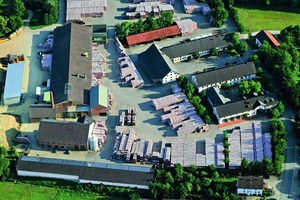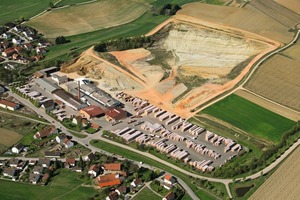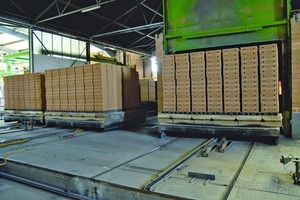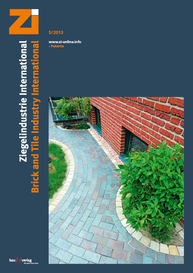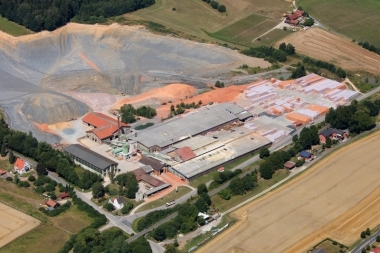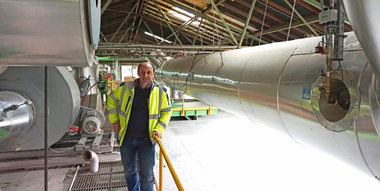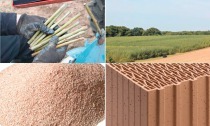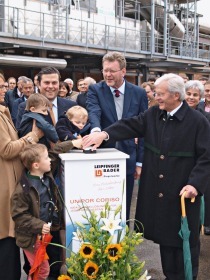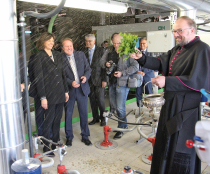Leipfinger-Bader takes advantage of the Renewable Energy Act‘s equitable adjustment scheme
Each year, some 160 million NF units come off the line at Leipfinger-Bader brickworks. Also each year, that costs the company over € 5 million for electricity and fuel oil. This year, though, the middle-market enterprise will be spending a lot less on electricity: as of 2013, this Southern German heavy clay producer is being allowed to utilize the equitable adjustment provision of Germany‘s Renewable Energy Act (EEG) for an – anticipated – significant reduction of their EEG levy. The company achieved this by having itself certified with the aid of an external energy consultant and is now in the process of establishing an in-house energy management programme.
For over two years now, these Lower Bavarian brick people have been partnering with consultants from BFE Institut für Energie und Umwelt in Mühlhausen near Heidelberg. The first step was for the BFE experts to analyse the energy supply contracts and accounts they received from the clients‘ directorate. Based on their report, both of the company‘s production facilities replaced their power suppliers and are now saving nearly € 13 000 a year.
According to the EEG, all applicant companies with an annual power consumption of more than 10 GWh require certification. This is to prove that their energy consumption and existing potentials for reducing it have been surveyed. Since both halves of Leipfinger-Bader KG, each for its own part, remain below the limit, simplified certification according to the pertinent BAFA [1] sufficed for the year 2013. However, the commercial and technical analyses performed by BFE Institute as consultancy inputs already amounted to a rough foundation for the energy report, so all that remained to be done was to appropriately compile and edit the data and conduct some additional walkdown inspections. Ultimately, the composite report for Puttenhausen and Vatersdorf amounted to 58 pages each, plus 30 pages of appendices. An independent certifier evaluated the information provided, made a few corrections and issued the certificate the brickmaker needed to submit together with the application and the report drawn up by a BAFA auditor.
Now, in order to secure similar relief in connection with the EEG apportionment in the years to come, the company will need certification pursuant to ISO 50 001. For that, Leipfinger-Bader will have to designate an energy officer, regularly amend and update their energy report and draw up an energy manual showing how energy flows at both plants. In addition, submeters will have be installed for the various lines and systems. Work on the management system began in the summer of 2012 and will have to be up and running by the mid-2013 application deadline.
Oil-fuelled heat generation continues for the time being
One of the main topics of discussion with the energy consultants was whether or not the brickworks should continue generating heat with heavy and light fuel oil or switch to gas. All the kilns and dryers in Vatersdorf and Puttenhausen together consume 16 tonnes of oil every day.
One argument in favour of converting was that natural gas is presently cheaper thanks to its having been decoupled from the price of oil. Annual savings in excess of € 500 000 therefore appeared feasible. In addition, the brickworks would not need to lay in stocks of natural gas. That would increase efficiency while reducing the plants‘ carbon footprint. On the other hand, no one can tell just how far future prices will be going up or down on the energy market. Nor can anyone foresee how a different energy carrier might affect the kilns‘ flame patterns. Mainly, though, the company will have to invest millions in new burners and submeters for both plants, plus a substantial share of the cost incurred for new natural-gas piping. All things considered, company management decided to stick with oil for a few more years.
In the course of consultation, a detailed list of money-saving technical proposals was drawn up, and Leipfinger-Bader‘s management will decide successively for or against their implementation. Typical examples include reducing the compressor pressure, installing low-energy motors, insulating the combustion air piping and opting for a more energy-saving form of shop floor lighting. Altogether, the potential savings add up to several 10 000 Euros.
The photovoltaic installations on the roofs of both plants will have paid for themselves within a few years, as the power they produce is being fed into the public grid. By utilising renewable sources of energy, renaturalising spent clay pits and ecologically enhancing the plant premises with natural biotopes, Leipfinger-Bader KG is acting both sustainably and in harmony with the environment.
Thomas Krüger, BFE
[1] BAFA = Bundesamt für Wirtschaft und Ausfuhrkontrolle = Federal Office of Economics and Export Control

